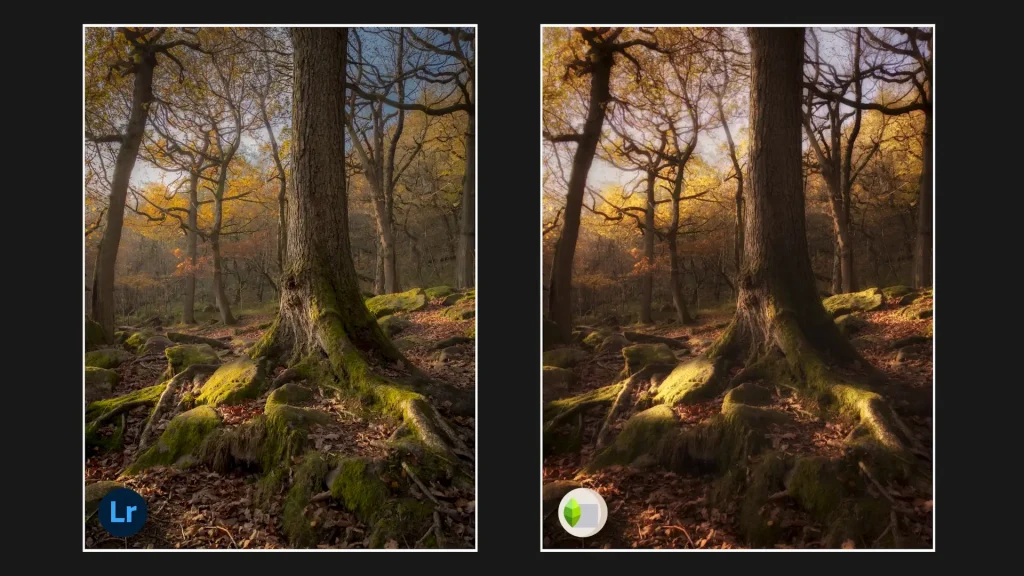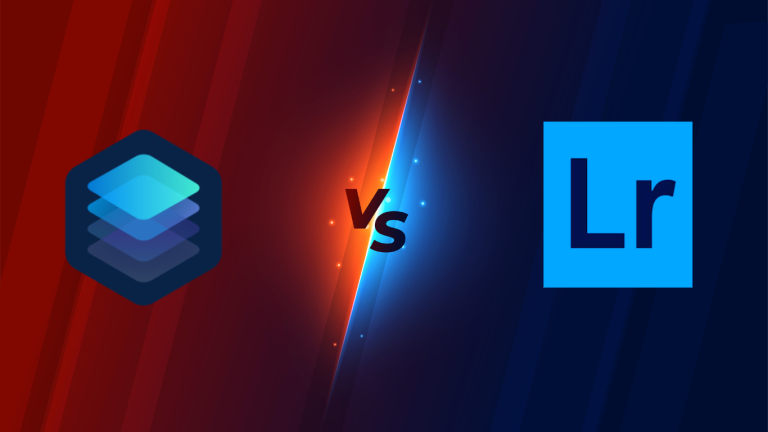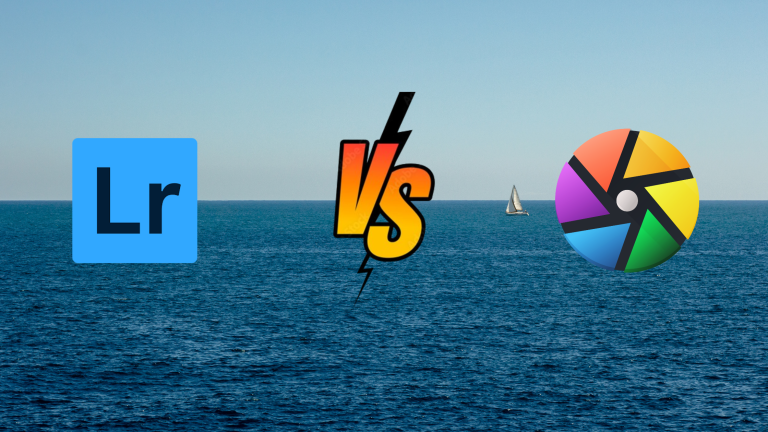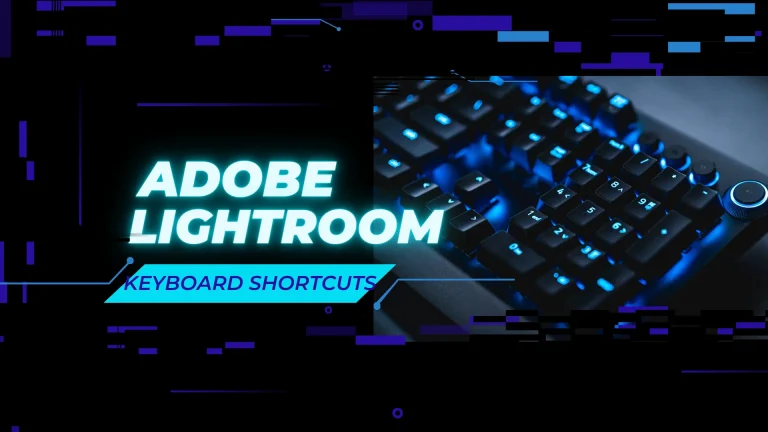Lightroom VS Snapseed | Which Photo Editor is Better?
Deciding which editing software to use to edit the beautiful photos that you capture can be a real headache. I used to deal with the same problem when it came to editing my photos. I’m sure that whenever you are deciding what app to choose, two apps might come to your mind. One of them being ‘Adobe Lightroom’ and the other one, ‘Snapseed’.
These two apps have always been an ideal choice for most of the professional as well as beginner photographers. You might be confused too, right? But don’t you worry because I’m going to help you decide, in 2024,which one is better for you, Lightroom vs Snapseed.
About Adobe Lightroom
Adobe created Lightroom, an editor and organizer for both photos and videos.
Lightroom was exclusively released for PCs in 2007. A mobile version was also made available after a few years, in 2017. Lightroom is now available on macOS, iOS, Android, PC/Windows, and tvOS (Apple TV). It is known as Lightroom Classic on PC.
It can snap images straight from the app thanks to its built-in camera capability. It also offers amazing tools for excellent editing. Its settings are one of its distinctive qualities. With just one click, you can edit your photos in a matter of seconds, thanks to its presets.
About Snapseed
Snapseed is a photo editing app released by ‘Nik’ in 2011 for iPads only. A year later one of the most famous companies in the world, ‘Google’, saw its potential and released it for Android too which means that it became available on Android as well as iOS.
Unlike Lightroom, Snapseed isn’t available on Windows or any other platform except Android or iOS. One good thing about Snapseed is that it’s totally free of cost. Additionally, it is easier to use than Lightroom but Lightroom gives way better editing results.

Lightroom vs Snapseed: Comparison Table
| Factors | Lightroom | Snapseed | Winner |
| Platform | Mobile devices & Desktops | Mobile devices only | Lightroom |
| Cloud Integration | Adobe Cloud | Limited Cloud Integration | Lightroom |
| Organization | Powerful Organization | Limited Organization | Lightroom |
| Raw editing | Full Raw editing | Limited Raw editing | Lightroom |
| Editing tools | Comprehensive tools and presets | Wide range of tools and filters | Both |
| User Interface | Simple user-interface | Friendly user-interface | Snapseed |
| Sharing | Diverse sharing options | Limited sharing options | Lightroom |
| Integration | Good integration with other Adobe apps | Limited integration | Lightroom |
| Advanced Features | Advanced editing features like HDR merge, panorama stitching, and selective adjustments | Advanced editing features like healing brush and perspective correction | Both |
| Updates | Regular Updates | Occasional Updates | Lightroom |
| Community Support | Strong online community | Limited online community | Lightroom |
| Ease of use | A little difficult for beginners | Easy to use for beginners | Snapseed |
| Workflow | Non-destructive editing | Non-destructive editing | Both |
| Price | Subscription based, as well as free version | Completely free to use | Snapseed |
| Export options | Plenty of export configurations | Limited export options | Lightroom |
| Batch editing | Diverse batch editing options | Limited batch editing options | Lightroom |
| System requirements | More system requirements on desktops | Light system requirements | Snapseed |
| Performance | Great performance overall | Mobile-friendly performance | Both |
| AI Features | Many AI-powered features | Limited AI features | Lightroom |
Detailed Comparison of Lightroom vs Snapseed
Following is a detailed comparison of Lightroom and Snapseed:
1. User Interface And Experience
If we talk about the user-interface of both these apps we find out that snapseed has a simple and friendly user-interface. On the other hand, some beginners can find it a little difficult to use Lightroom for the first time.
What makes Snapseed so easy to use is that once you open the app, you just have to do the following things to finish with your editing tasks:
- Import the image by clicking on ‘+’ icon.
- As soon as you import the image, three tabs will be displayed, Export, Tools & Styles.
- By clicking on these apps you find that they open up to give different buttons which perform different options. For example, you can use the ‘crop’ button to crop your image.
On the other hand, Lightroom has a little complex user-interface and the users have to use it a few times to get familiar with it. Once you import an image you find out that there are a lot of tabs and options as compared to Snapseed. It has a library tab to quickly access and organize images. Additionally, it has a presets tab to apply ready made editing combinations to your photos and so on.
Winner: SNAPSEED
2. Editing Capabilities
When it comes to editing tools and features, Lightroom definitely wins this fight as it has diverse editing tools and features unlike Snapseed which only has a few editing tools.
Text Feature:
A distinct and easy to use feature of Snapseed is its text feature. Using this feature, you can add text or captions to your images to describe and present them better. To add text to your images you just have to click on the text button, write your text and then style it however you want.
Winner: SNAPSEED
Portrait & Head-Pose Tool:
If you like taking portrait shots then Snapseed is the most easy to use editing tool for you. You can use its feature made specifically for editing portraits to get quick and incredible results. On the other hand, it can be a little tricky to edit your portraits in Lightroom.
Another great feature provided by Snapseed is its Head-pose tool. I was amazed when I found out that this tool can easily be used to edit all the features of your face. For example if you want to fix your smile or slightly tilt your head, you can easily do so with this tool.
Winner: SNAPSEED
Expand Tool:
Let’s say you snap a photo of yourself and you think that it’s Instagram-worthy but when you go to post it on you find out that the image is not the right size. An easy solution for that is the expand tool of Snapseed.
By using this tool, you can easily add a white border to your image which expands it and makes it the right size for instagram. And if you don’t like the idea of adding a border to your images, you can simply expand it by using the magic tool of Snapseed.
Winner: SNAPSEED
Selective Editing:
The Selective Editing feature is provided by both Lightroom and Snapseed. But it is more comprehensive on Lightroom.
If we talk about the selective editing feature of Snapseed, its advantage is that it’s free of cost but its con is that it provides limited options. But it is great for beginners who don’t want to get into advanced settings. All you have to do is to select the ‘Selective’ option and then decide what point of the image you want to edit. The whole background remains the same, only the point that you have chosen is edited.
The Selective editing feature of Lightroom is great if you want to do comprehensive and detailed editing, but its downfall is that it is a premium feature and you have to subscribe to a premium subscription to use it. But if you want to get the whole Lightroom experience for free, you can download the Lightroom Mod APK.
Winner: SNAPSEED
Sharpness & Masking:
The Sharpness & Masking Feature is present in both Lightroom and Snapseed, but it gives the professional results in Lightroom. By combining the sharpness tool and the masking tool to adjust the sharpness of certain parts of an image in Lightroom you get the best results ever.
Winner: LIGHTROOM
Dehaze Tool:
The Dehaze tool is a distinct feature of Lightroom and isn’t present in Snapseed. This tool is specifically used for the editing of skies, landscapes and sceneries in the images to add more clarity to them.
Winner: LIGHTROOM
HSL Tool:
HSL stands for “Hue, Saturation and Luminance” and is used to configure these aspects of your images with the help of three sliders. This feature is present in Lightroom only and provides 8 basic color options. The purpose of this tool is to change the brightness or sharpness of a specific colored object in your images.
Winner: LIGHTROOM
Color Grading:
Color grading is a feature that is used to add new and improved color shades to your images and is loved the most by professional editors. Lightroom is way advanced in this feature as it provides a color palette of more than 1500 colors making it the only app of its kind.
Winner: LIGHTROOM
3. Presets
A preset is a saved group of settings that edits your picture with just a single click. Presets are like magic wands, you just have to give them a whoosh and they take care of the rest of the work.
There is a large number of presets on Lightroom. Presets are basically a group of saved settings in them which can easily edit an image with a single click. These presets are customizable as well.
On the other hand, Snapseed offers limited presets but what’s good about these presets are that they are a little more customizable than the Lightroom ones. Which means that you can make visible changes to your final results as compared to how it would have been without the wide range of customizing options.
Winner: LIGHTROOM
4. Ease of Use
When it comes to the ease of use and user-friendly experience, Snapseed wins the race. The reason is that Snapseed is specifically designed for beginners. You merely have to click a few buttons and swipe a few options left and right on your screen to get your work done.
Lightroom, on the other hand, can also be considered an app made for beginners but what makes it different from Snapseed is that some of its features can be really advanced for beginners. So it might take some time for newbies to get used to editing on Lightroom. But you know what they say; “Practice makes a man perfect”.
Winner: SNAPSEED
5. File Formats
Lightroom offers a wider range of file formats as compared to Snapseed, but still Snapseed offers the basic file types which makes them both compatible with almost all platforms. Lightroom offers many file formats like JPEG, TIFF and Raw Files. This makes it the best photo editing app for beginners.
Snapseed focuses on basic file formats like JPEG. Even though it does offer some support for RAW images still it is limited when it comes to file types. The reason is that Snapseed is a mobile application only so it doesn’t make sense to make it extra-advanced. The file formats provided by Snapseed fulfill the needs of its audience which are mostly social media enthusiasts.
Winner: LIGHTROOM
6. Price Offers
When it comes to the pricing of these apps we see that Snapseed is totally free of cost while Lightroom offers about 70% of its features for free.
Even though you have to buy a premium subscription (which starts at $9.99/month) to get full access to all the premium features of Lightroom, in my opinion, it’s still worth it because not only you get Lightroom Pro on your mobile device but you can use the premium version on all your devices including with your desktop. Not only that, you get all the tools including Photoshop that are created by Adobe with that subscription.
Snapseed, on the other hand, is a totally free of cost app. There is no subscription required to use all of its features and it is easy to use too. It is best for basic editing for social media posts.
Winner: SNAPSEED

NOTE:
You might have noticed that most of Lightroom’s features are a little advanced, which means that to actually get used to this app, you might have to watch a tutorial.
How to Download and Install Lightroom and Snapseed
Follow these steps to download Lightroom and Snapseed on your mobile devices:
- Go to google play store.
- Search for ‘Lightroom’ or ‘Snapseed’ whichever one you want to download.
- Then click on the ‘install’ button.
- The app will be downloaded soon.
Pros and Cons of Adobe Lightroom
Pros
Cons
Pros and Cons of Snapseed
Pros
Cons
Personal Opinion
I’ve put both Lightroom and Snapseed to the test and I’ve found that Lightroom is best for professionals as well as beginners but snapseed is only for beginners. The reason I said that is because when I was testing both of these apps, I found out that Snapseed wasn’t able to fulfill all my editing needs but when I used Lightroom, its diverse options allowed me to get my desired end results.
Yes, I admit that using Lightroom for your casual editing tasks can be a little tricky but trust me once you get the hang of it, you’ll never have to use any other editing app or software again.
Conclusion
In conclusion, Lightroom and Snapseed are designed for different groups of people:
- If you are a professional photographer who likes taking a lot of photos then Lightroom is just the editing tool for you.
- On the other hand, if you aren’t a professional photographer or you only like taking random photos for your social media then Snapseed is all you need.
That being said, the choice between Lightroom or Snapseed depends upon your personal preferences. I suggest that you try both these apps to identify which suits you the best.







